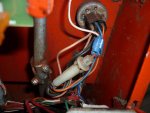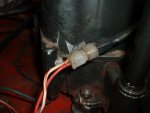cfmechanics
Member
- Joined
- Mar 7, 2012
- Threads
- 5
- Messages
- 37
Hello everyone,
I have had a charging problem with my 12hp Westwood T1200 for a few years now and I have finally got round to fixing it.
The problem basically is my battery is not charging.
I have done a few tests on it using my multimeter and found out the alternator is working correctly.
The battery is new and there are no problems with it.
Electricity is leaving the engine but is not getting to the battery to charge it up.
I have installed a new circuit board so its not that.
My suspicions are its something related to the solenoid?
I have just changed the inline fuses and one was broken so I replaced it and the battery is still the same, no charge so its not that.
I really am stuck if its not the solenoid. :confused2:
Does anyone have any ideas of this? Anything would be much appreciated.
Thanks very much
CFMechanics :thumbsup:
I have had a charging problem with my 12hp Westwood T1200 for a few years now and I have finally got round to fixing it.
The problem basically is my battery is not charging.
I have done a few tests on it using my multimeter and found out the alternator is working correctly.
The battery is new and there are no problems with it.
Electricity is leaving the engine but is not getting to the battery to charge it up.
I have installed a new circuit board so its not that.
My suspicions are its something related to the solenoid?
I have just changed the inline fuses and one was broken so I replaced it and the battery is still the same, no charge so its not that.
I really am stuck if its not the solenoid. :confused2:
Does anyone have any ideas of this? Anything would be much appreciated.
Thanks very much
CFMechanics :thumbsup:


